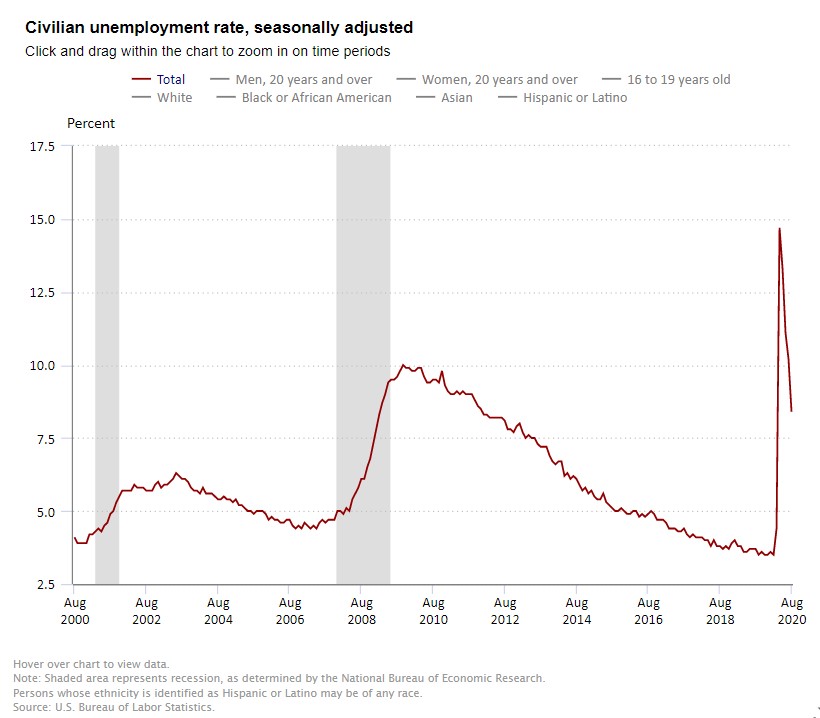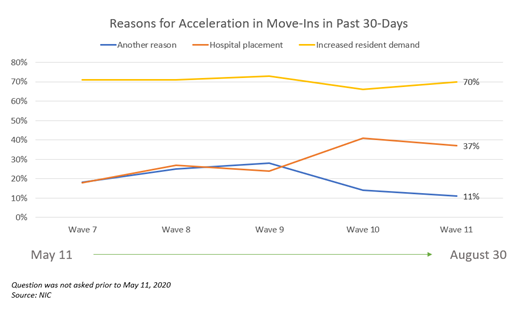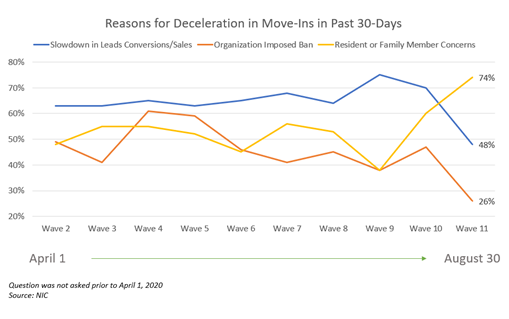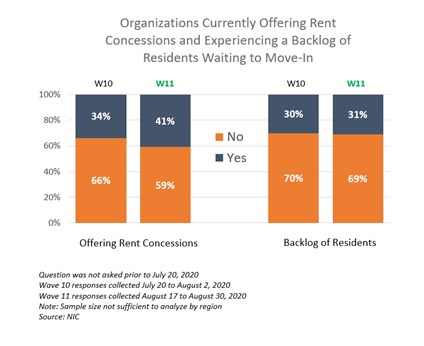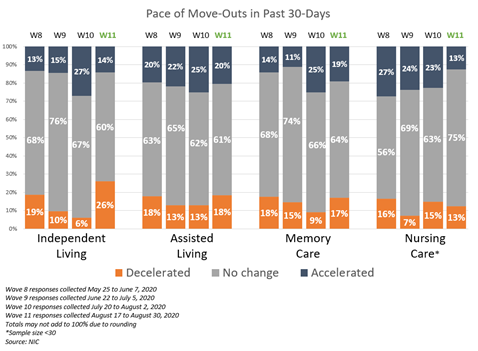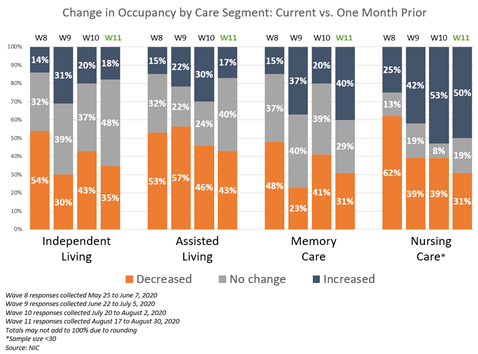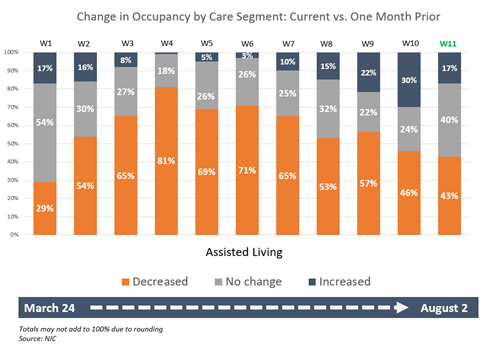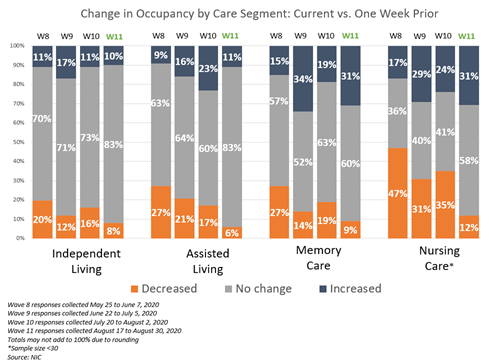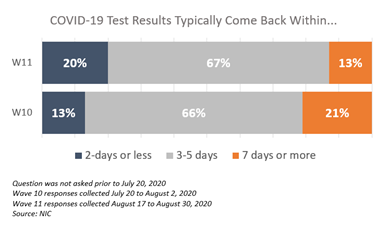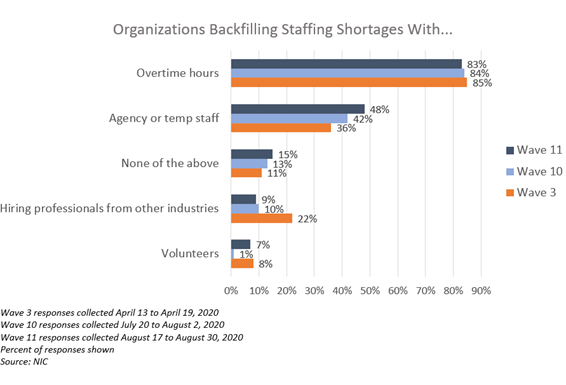The NIC MAP® Data Service recently released national monthly data through June 2020 for actual rates and leasing velocity. In this release, NIC also provided data on three metropolitan areas for which there is enough data to report: Atlanta, Philadelphia, and Phoenix. 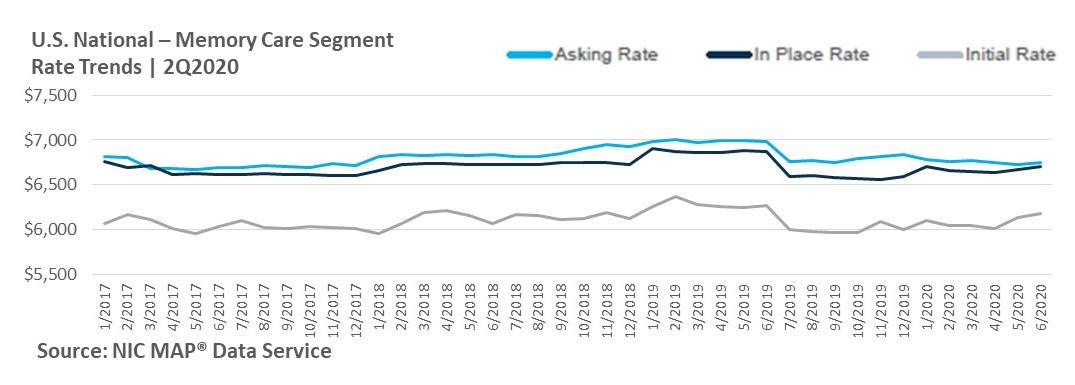
A few of the key takeaways from the 2Q2020 Seniors Housing Actual Rates Report are listed below. Full access to the reports and other takeaways are available to NIC MAP Data Service clients.
- Average initial rates for residents moving into independent living, assisted living and memory care segments were below average asking rates, with monthly spreads generally largest for memory care, followed by independent living segments and then assisted living segments. Care segments refer to the levels of care provided to a resident living in an assisted living, memory care or independent living unit.
- The average discount for the memory care segment was the largest of the three care segments in June 2020 and averaged 8.5% below average asking rates. This equates to an average initial rate discount of 1.0 month on an annualized basis, less than 1.5 months at the end of 2019.
- Average in-place rates for residents in assisted living and memory care segments were below average asking rates. The discount was smaller for in-place rates than initial rates compared with asking rates.
- For the assisted living segment, average in-place rates consistently were below average asking rates since reporting began in January 2017. The monthly gap between these rates was 0.8% or $40 in June 2020, the equivalent of 0.1 month. It has averaged 0.2 month over the past six months.
- The rate of move-outs has exceeded or equaled the rate of move-ins for nine of the prior twelve months for both the independent living and assisted living segments, and for seven of the last twelve months for the memory care segment as of June 2020.
The NIC Actual Rates Initiative is driven by the need to continually increase transparency in the seniors housing sector and achieve greater parity to data that is available in other real estate asset types. Now, more than ever, in the world of the COVID-19 pandemic, having access to accurate data on the actual monthly rates that a seniors housing resident pays as compared to property level asking rates helps NIC achieve this goal.
The Seniors Housing Actual Rates Report available in NIC MAP provides aggregate national data from approximately 300,000 units within more than 2,500 properties across the U.S. operated by 25 to 30 seniors housing providers. The operators included in the current sample tend to be larger, professionally managed, and investment-grade operators as we currently require participating operators to manage 5 or more properties. Note that this monthly time series is comprised of end-of-month data for each respective month.
Note that the data reported here is on care segment, where care segment type refers to each part or section of a property that provides a specific level of service, i.e., independent living, assisted living or memory care. NIC also has this data for majority property type, where majority property type refers to which care segment comprises the largest share of inventory. In addition, care segment actual rates data is also available for the Atlanta, Phoenix and Philadelphia CBSAs.
While these trends are certainly interesting aggregated across the states, actual rate data is even more useful at the CBSA level. As NIC continues to work toward growing the sample size to be large enough to release more data at the CBSA level, partnering with leading software providers like Yardi, PointClickCare, Alis, and MatrixCare makes it easier for operators to contribute data to the Actual Rates Initiative. NIC appreciates our partnerships with software providers and our data contributors and their work in achieving standardized data reporting.
If you are an operator or a software provider interested in how you can contribute to the Actual Rates Initiative, please visit nic.org/actual-rates.
